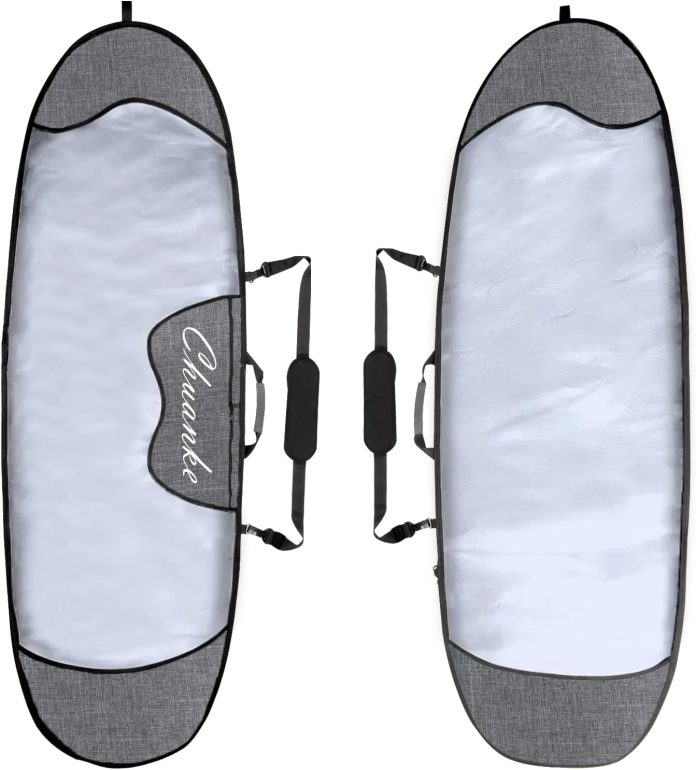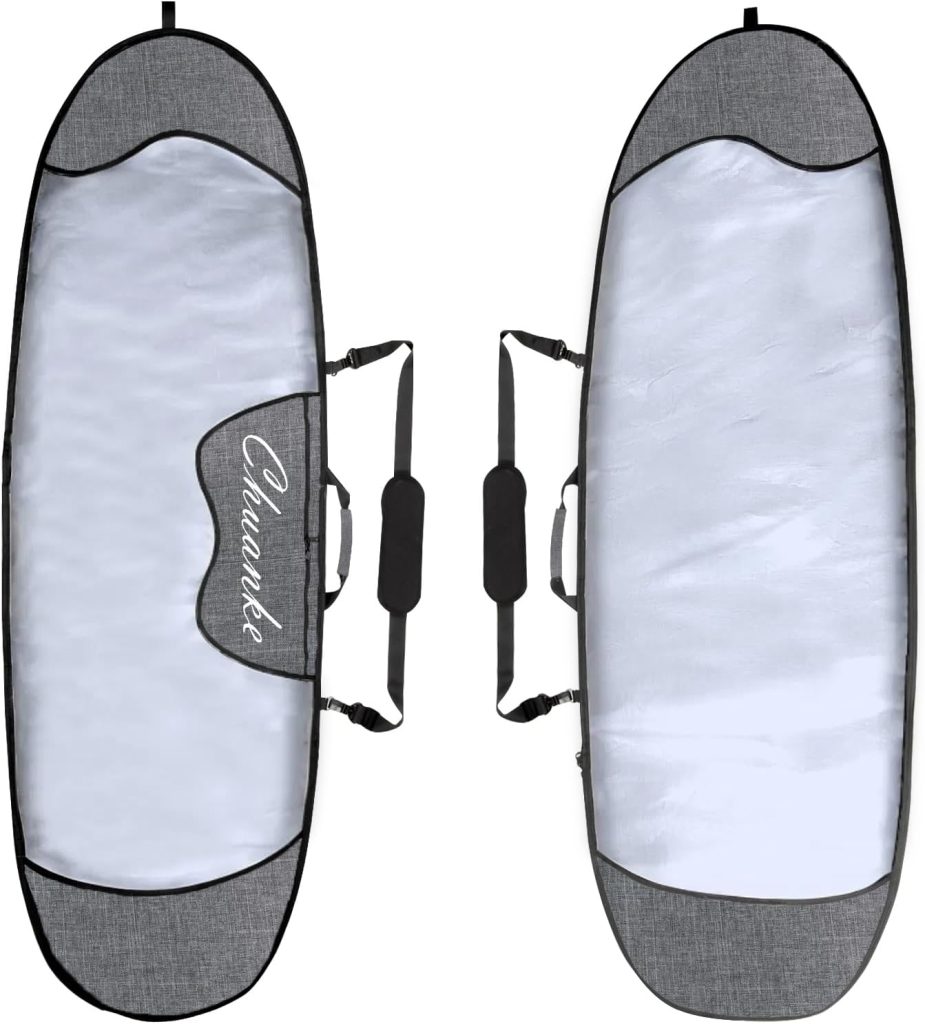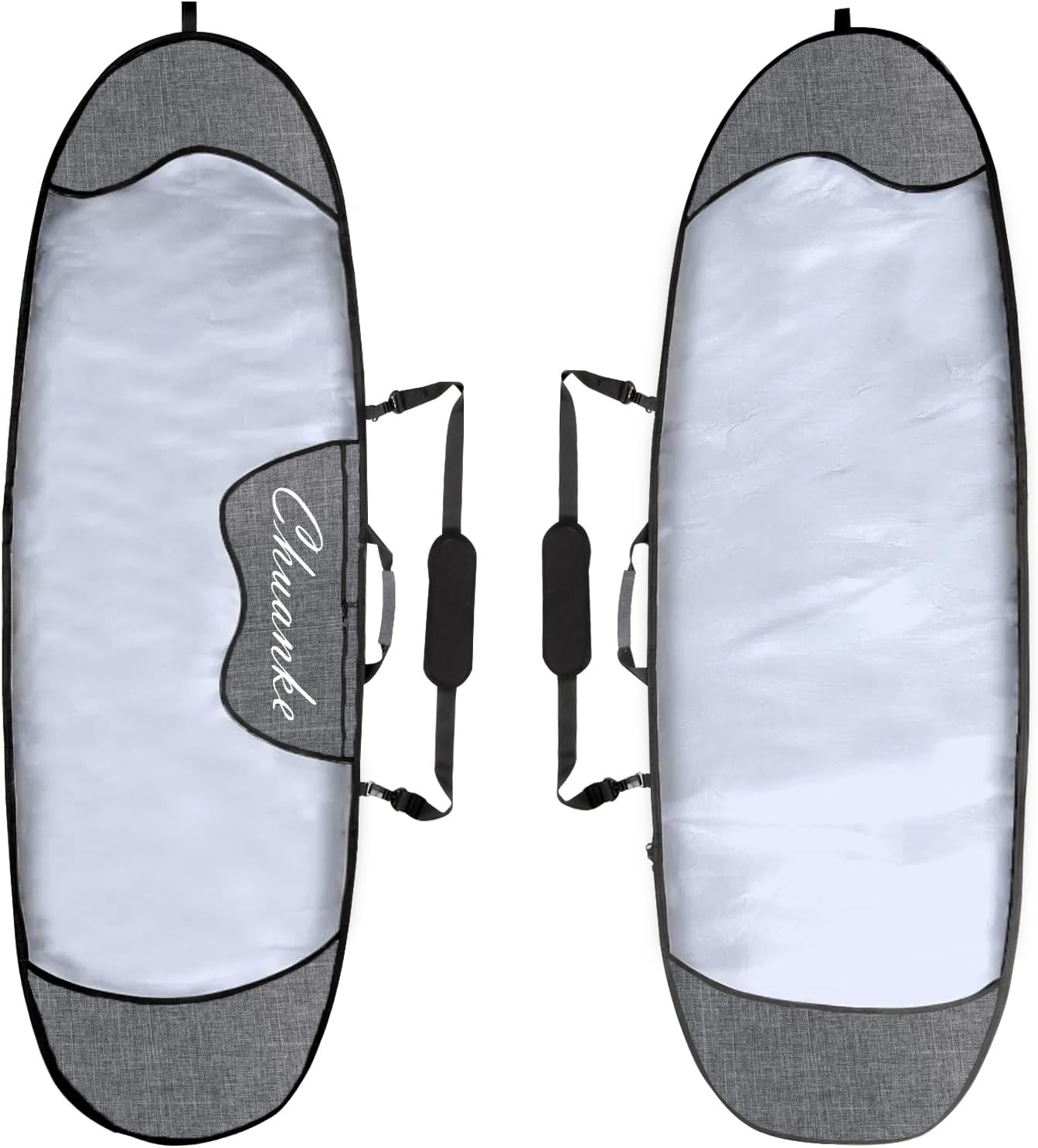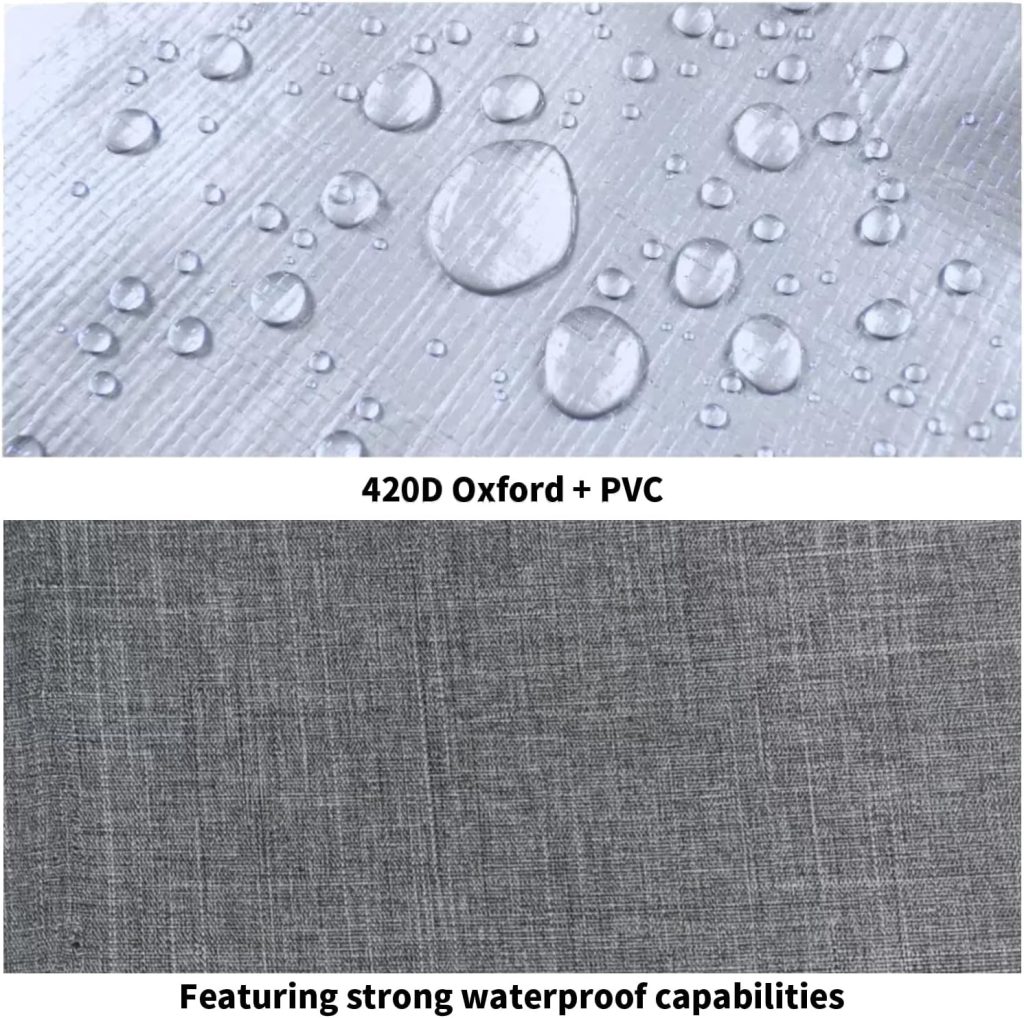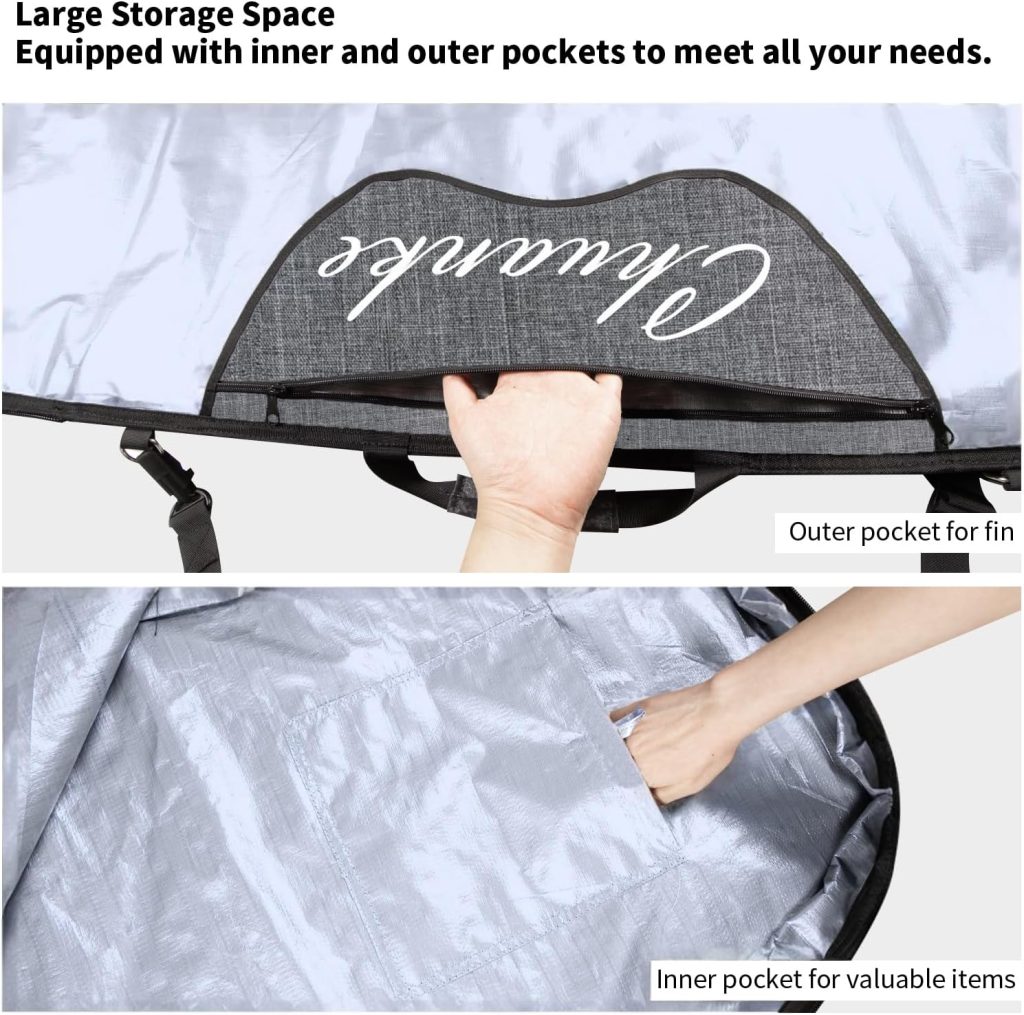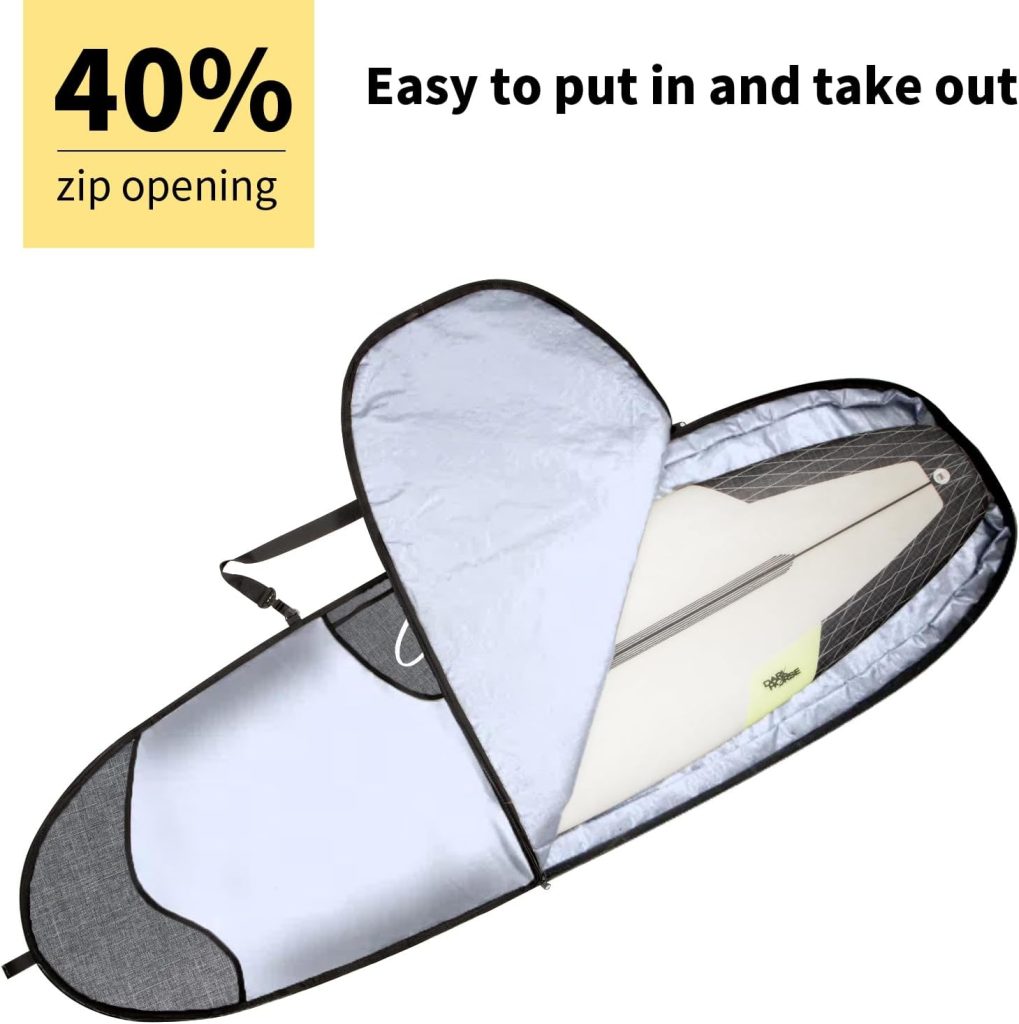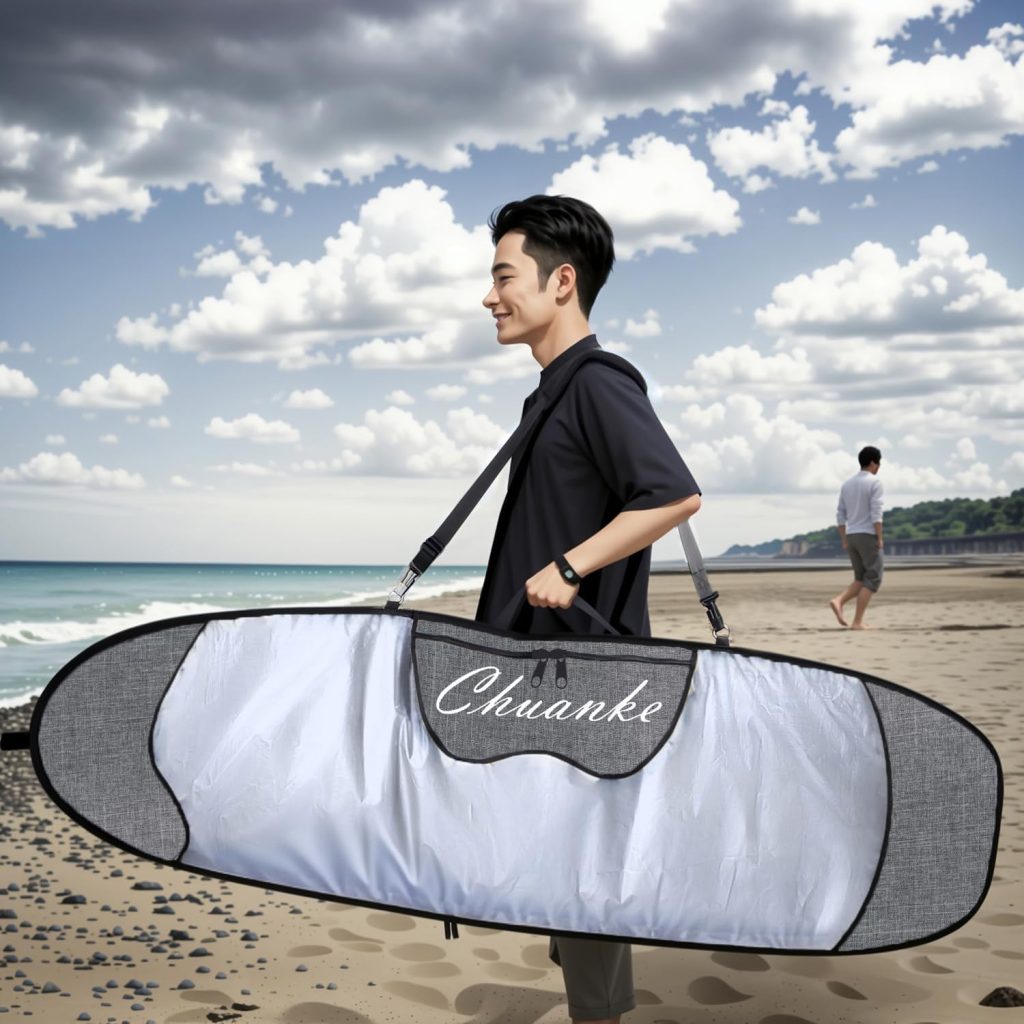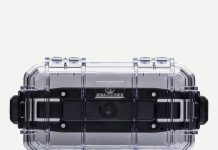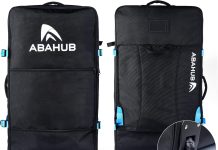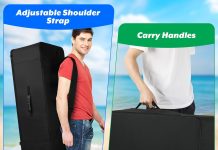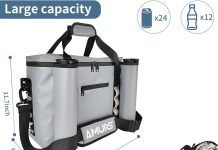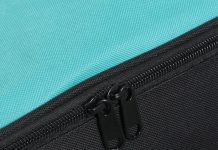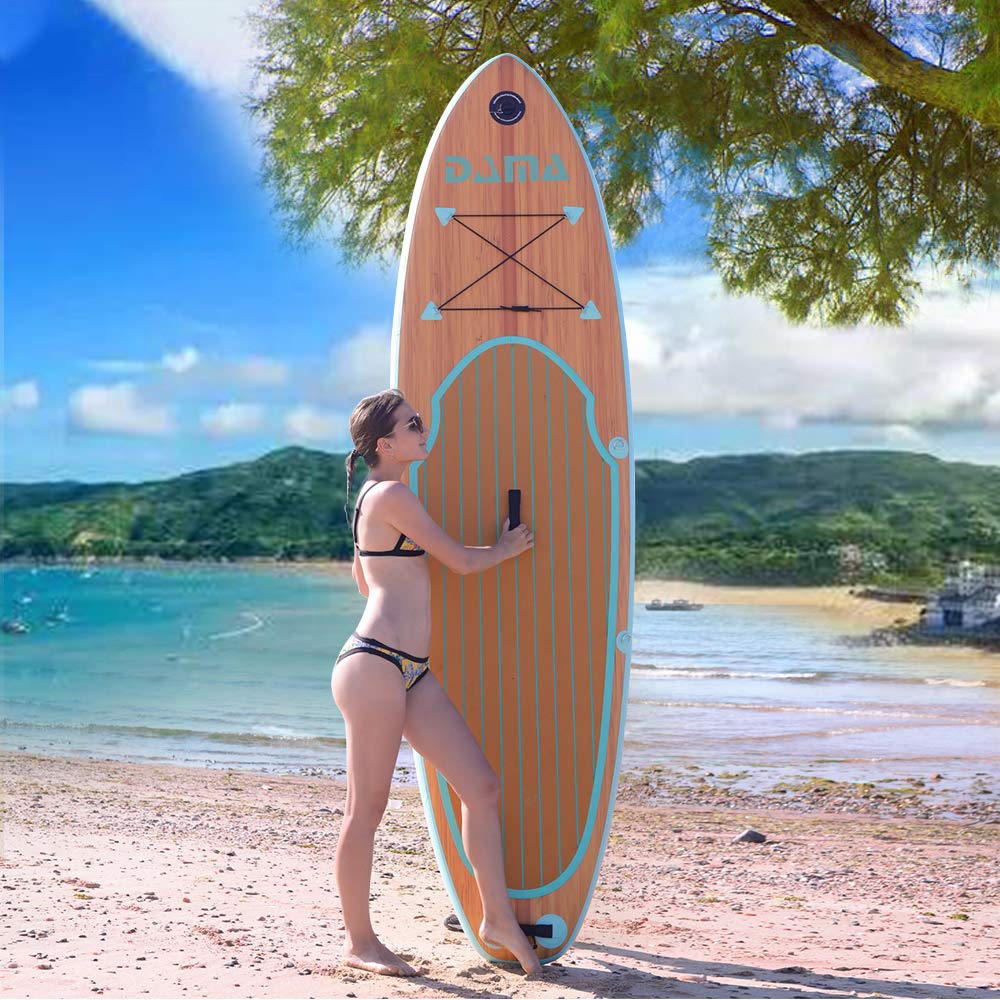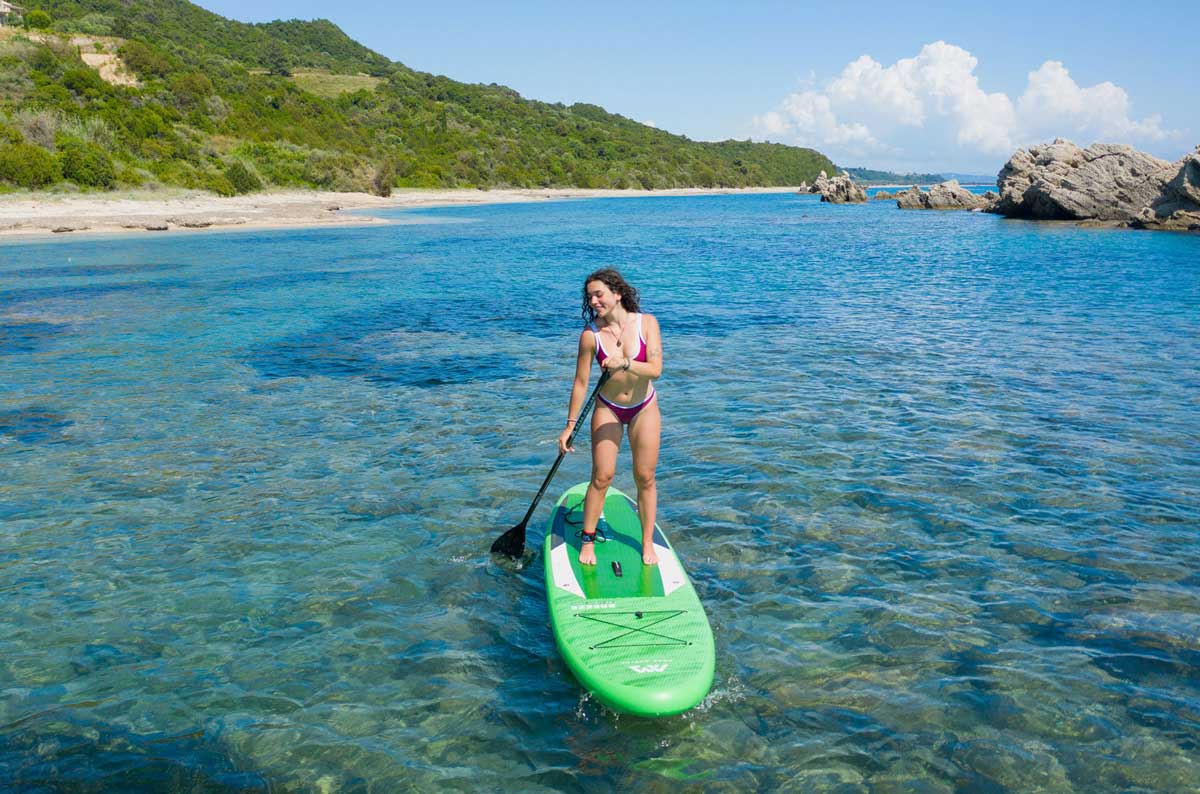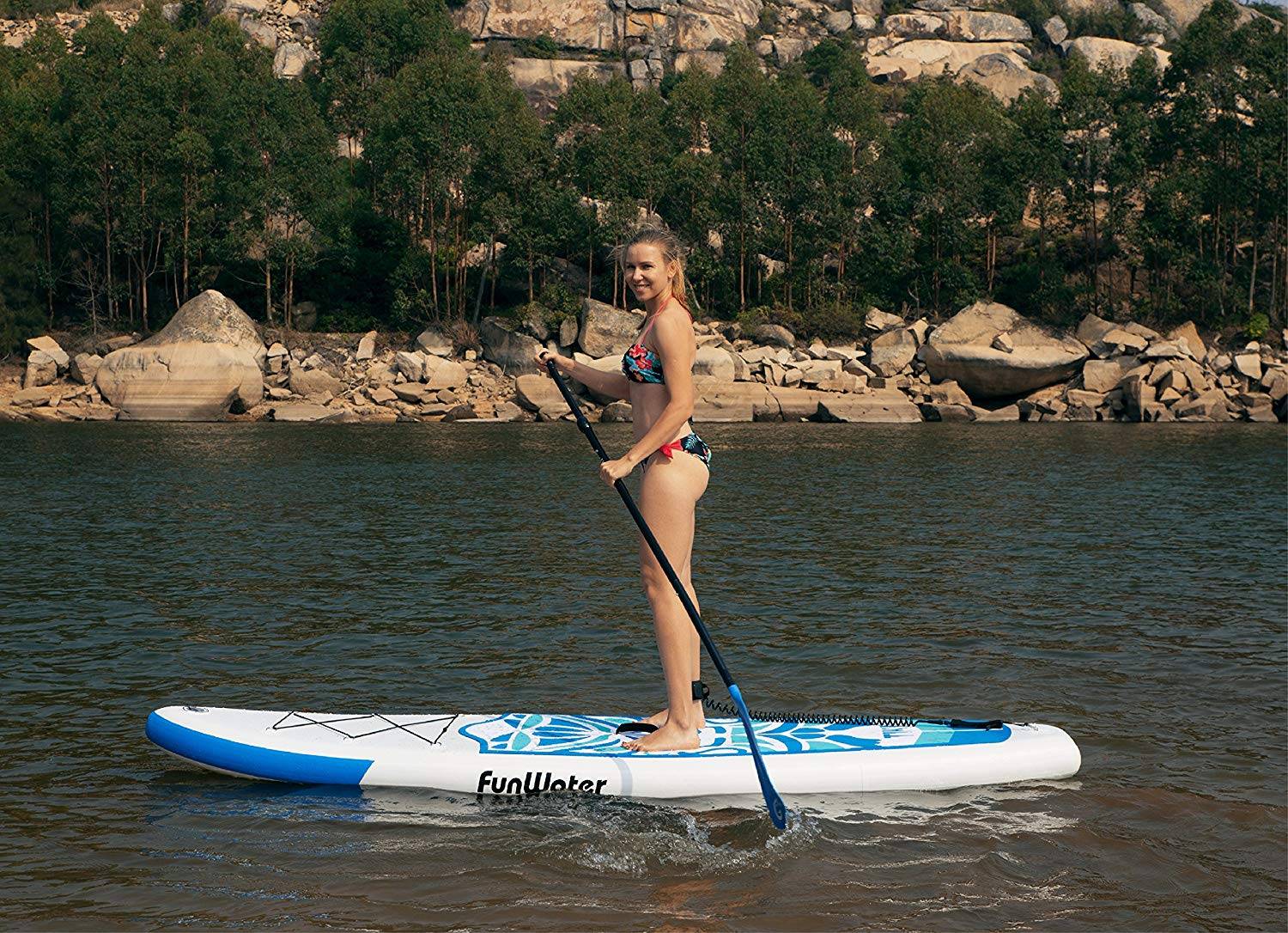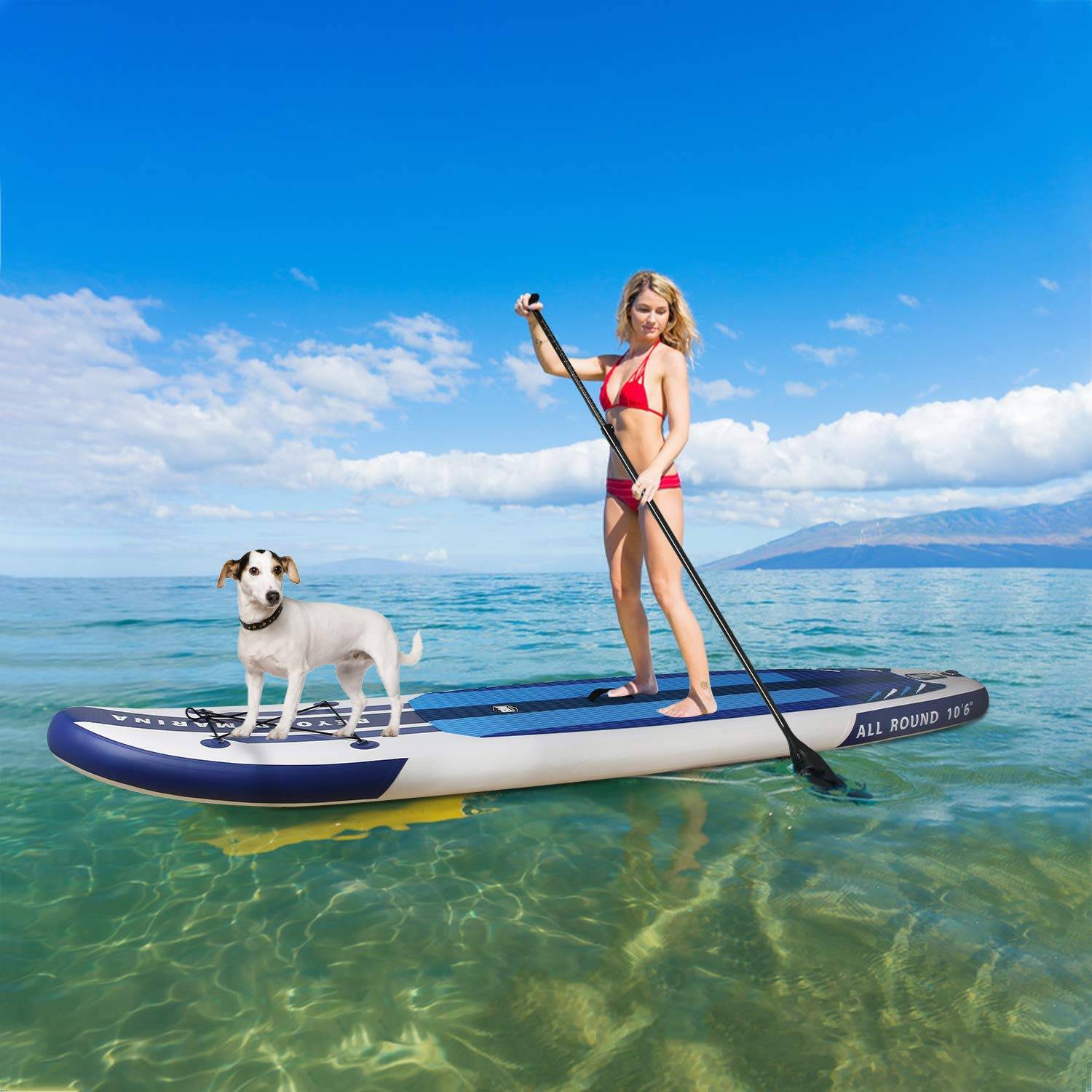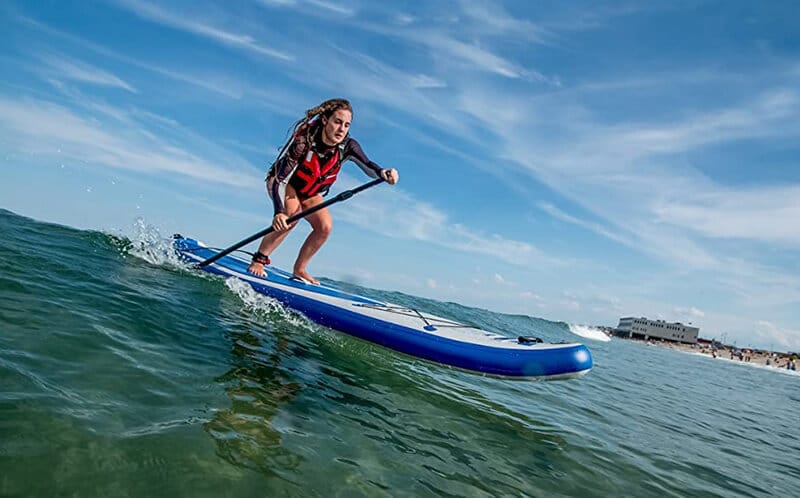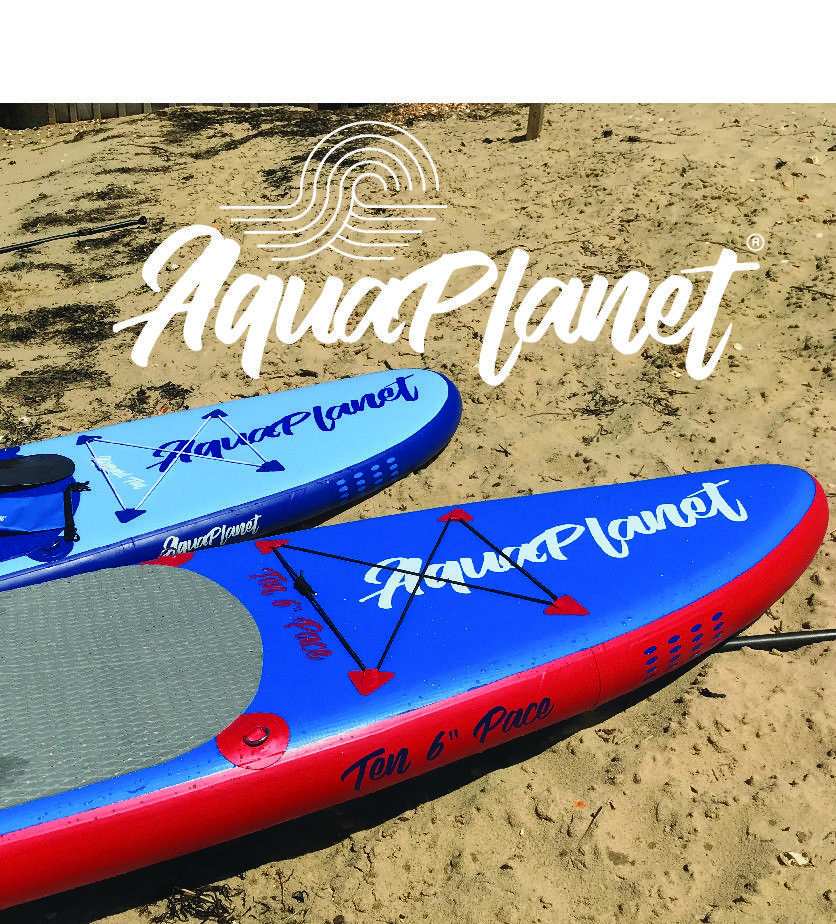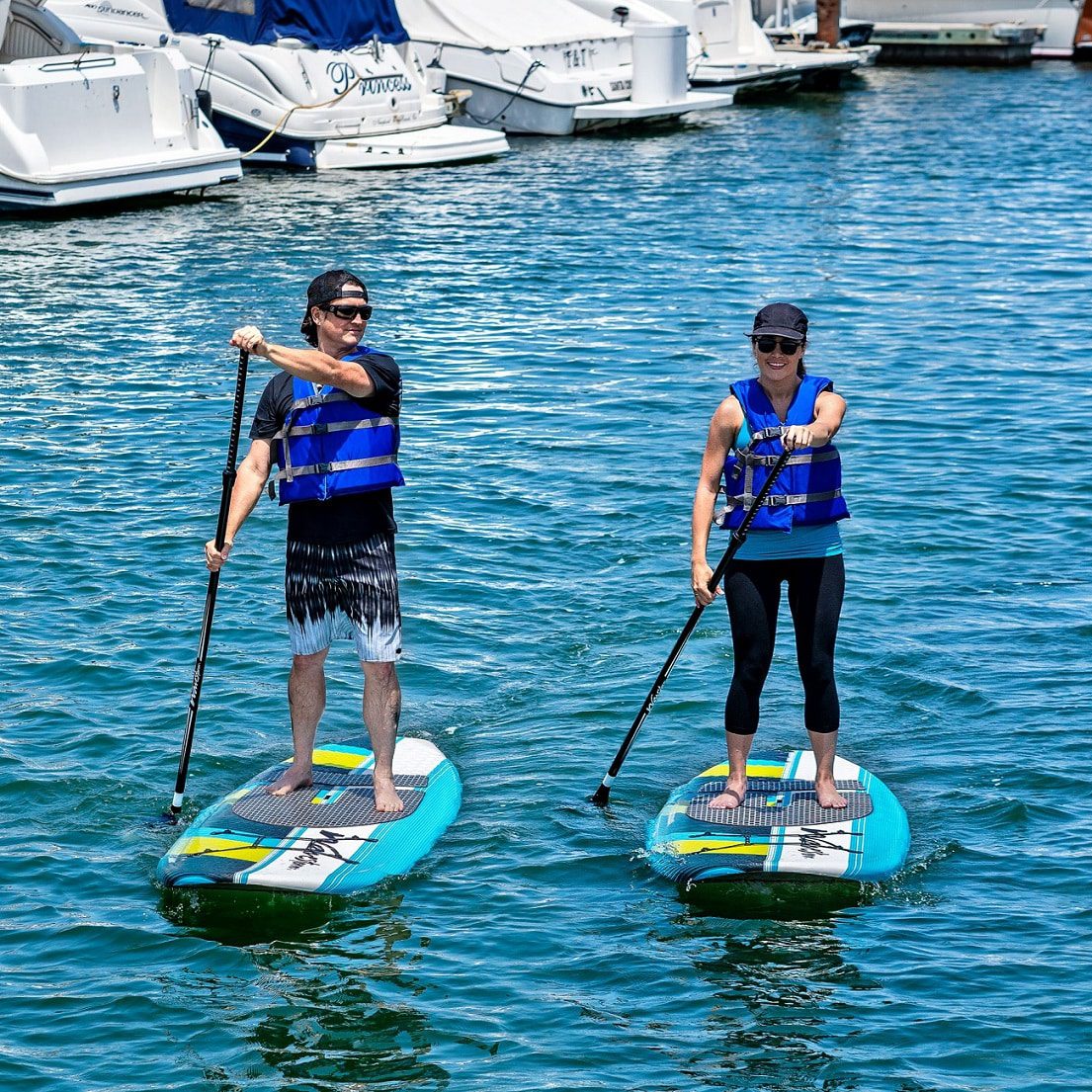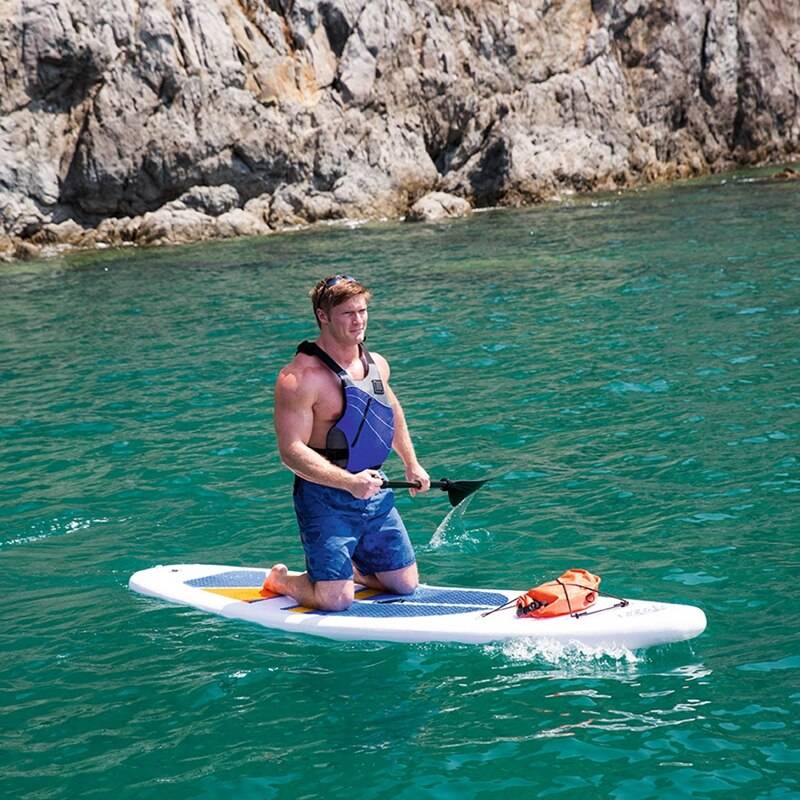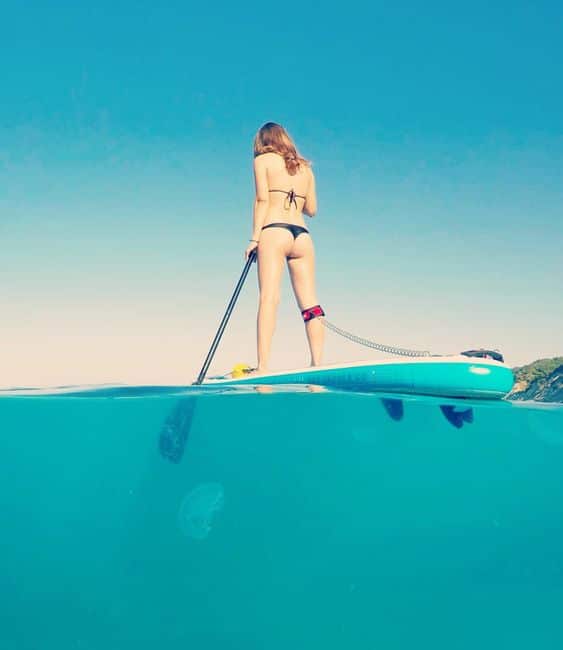Looking for a reliable bag that will protect my longboard on road trips, flights, and storage?
My quick summary
I bought the “Surfboard Carrying Bags for Outdoor surfboard storage bag longboard bag,6’0, 6’6, 7’0, 8’0,” because I wanted a lightweight but protective option for my board that still felt practical for everyday use. In short, this bag gives me a very good balance of padding, UV protection, and carrying comfort without the bulk and expense of a hard case.
Surfboard Carrying Bags for Outdoor surfboard storage bag longboard bag,6'0, 6'6, 7'0, 8'0,
What I received in the box
The package arrived with the surfboard bag folded and protected in a plastic sleeve, along with detachable straps and a small instruction card. Everything I needed to start using it was included: the cushioned shoulder strap, cushioned handle, and spare buckles were all ready to attach.
First impressions
When I unzipped the bag for the first time I noticed the reflective silver shell and the thickness of the foam right away. The construction felt substantial — heavier and more solid than most cheap slip bags, but still flexible enough to store easily at home.
Design and materials
I appreciated that the bag uses a layered approach to protection: a thick 5mm foam pad across the body plus reinforced head and tail areas at 8mm. The outer shell is silver and UV resistant, which helps prevent wax from melting and gives a degree of water resistance. The product also lists a heavy-duty reflective shell shield plate to protect against impacts and travel stress; this, combined with quality stitching and seams, gives me confidence the bag was designed to take real-world punishment.
Foam and reinforcement details
The foam pad is 5mm on the main sections and thickens to 8mm at the head and tail, which are the parts of a board that typically take the most knocks. That targeted padding makes practical sense to me because those areas need extra cushioning during transport and handling. The seams at the reinforced areas feel double-stitched, which reduces my worry about early wear.
Outer shell and finish
The silver UV-resistant exterior reduces heat buildup and helps keep wax from softening on hot days. The surface also sheds water well in light rain, although it’s not fully submersible. The finish has a slightly textured feel that helps resist scuffs and light abrasions.
Protection performance
I use this bag for both storage and travel, and it has held up well. The padding absorbs everyday bumps and the reinforced nose and tail give me extra peace of mind when I’m loading boards into cars or onto roof racks. For airline travel, I would still recommend wrapping the board in additional protective layers (bubble wrap or extra padding) for heavy handling, but the bag is definitely better than a thin sock-style cover.
How it handled impact
I simulated a few impacts during testing — light drops, gear placed on top during storage, and typical shuffling in car trunks — and the foam reduced shock noticeably. The reinforced head/tail areas felt particularly effective at diffusing force. That said, for major drops or heavy handling at airports, a hard case is still the gold standard if you expect extremely rough treatment.
Sizes and fit
There are multiple sizes to choose from, covering common short, medium, and long boards. I chose a size that matched my longboard length and found the fit snug but not tight. Below is a breakdown that helped me decide which size would best suit my board.
| Size option | Best for board type | Approx internal length | Padding thickness | Notes |
|---|---|---|---|---|
| 6’0 | Shortboards, small funboards | 6’0 (~183 cm) | 5mm body / 8mm head-tail | Good for compact boards and daily shortboard use |
| 6’6 | Mid-length boards | 6’6 (~198 cm) | 5mm body / 8mm head-tail | Versatile for retro fishes and mini mals |
| 7’0 | Longboards (shorter longboards) | 7’0 (~213 cm) | 5mm body / 8mm head-tail | Great for many single-fin and noseride boards |
| 8’0 | Classic longboards, log boards | 8’0 (~244 cm) | 5mm body / 8mm head-tail | Best for full-length longboards and extra room for padding |
I recommend measuring your board from nose to tail including any leash or fin attachments, and then choosing a bag size that gives you a couple of inches of extra room. If you’re between sizes I usually go up rather than down to allow room for extra padding or a wetsuit.
Carrying comfort
The movable cushioned shoulder strap and cushioned handle make carrying the bag comfortable for short and medium walks. The strap is padded enough that I can carry the board for a reasonable distance without shoulder pain, and it detaches cleanly when I switch to using a roof rack or carrying by hand. When I need to hop between cars or walk from a parking lot to the beach, the handles and strap make that transition smooth.
Strap versatility and use on roof racks
I like that the strap is removable — when I’m using a roof rack I simply detach the strap to avoid it getting in the way or snagging. The bag’s attachment points are robust and the 360-degree rotating buckles make strap installation quick and straightforward. The cushion on the shoulder strap is movable, so I can position it for balance depending on where the board sits in the bag.
Storage features
The bag includes one internal Velcro pocket for small items and one external zipper pocket large enough for fins or a wetsuit top. Those pockets are small but practical; I keep fins and my keychain in the external pocket and wax and a leash cuff in the internal pocket. Having separate spaces keeps things from rattling around and makes loading/unloading more organized.
External pocket use cases
The external zipper pocket held my set of detachable fins and a small roll-up wetsuit top without stretching or distorting the zipper. It’s also handy for storing a fin key, sunscreen, or travel paperwork when flying. The pocket sits low enough that it doesn’t interfere with the board shape, which I appreciated.
Internal Velcro pocket
The internal Velcro pocket is ideal for items I want to keep away from the exterior — wax, a small multi-tool, or a card. It’s not huge, but it’s perfect for the little stuff that tends to get lost in bigger compartments.
Zipper and hardware
The bag uses a #10 corrosion-resistant zipper, which feels stout and smooth when I open and close it. The 360-degree rotating buckle system makes attaching and detaching easy, and the hardware overall feels durable. During months of use the zipper remained reliable and it resisted catching even when I had wet sand and saltwater on the bag.
Corrosion resistance and durability
Because I frequently surf in saltwater, the corrosion-resistant zipper was a must for me. I’ve seen cheaper zippers corrode and stick after a few trips, but this one stayed functional with a little post-use rinse and drying. The rotating buckles are a small but smart touch; they reduced twisting on the straps and made securing the bag more intuitive.
UV and waterproof performance
The silver UV-resistant outer shell noticeably reduces heat buildup inside the bag on sunny days, which helps keep my wax from softening. The shell is also effectively water-resistant for spray and light rain, so short wet trips don’t soak the board. I don’t recommend submerging the bag or leaving it out in heavy downpours for extended periods without extra protection, but for common surf conditions it performed well.
Wax protection
One of the best practical benefits for me was the reduced wax meltdown after leaving the bag in a hot car for a short time. The silver layer reflects heat and made a visible difference compared to my older, darker bag. That alone has saved me time and hassle after hot beach days.
Travel and airline suitability
I’ve used this bag for domestic flights and it handled checked baggage processing better than any thin cover I’ve owned. That said, airlines don’t always treat boards gently; if you expect very rough handling or want absolute protection from crushing I’d suggest additional padding or a rigid case. For many surfers who fly occasionally and want a balance of protection, portability, and cost, this bag is a solid middle ground.
Tips for airline travel
When I flew with my board, I added bubble wrap at the nose and tail and taped over the fins after placing them in the external pocket for extra security. I also padded the center of the bag with a towel around the board’s midsection to limit flexing during transport. Those small steps made me comfortable checking the bag while still keeping it manageable and affordable compared to a hard case.
Durability and real-world use
After months of use the seams, handles, and zipper still look good with only light cosmetic wear. The reinforced head and tail areas show virtually no fraying, which tells me the manufacturer focused on the parts that typically fail first. In day-to-day life — car trunks, rooftop racks, storage closets — the bag has proven reliable and easy to live with.
Wear points to watch
If there’s one thing I pay attention to, it’s the zipper anchor points and the strap attachment loops. These tend to take the most tension during carrying and loading, so I inspect them occasionally and haven’t found any trouble yet. Keep an eye on stitching after long-term heavy use, but my experience has been positive so far.
Pros and cons
I always find it useful to summarize strengths and weaknesses in plain language.
Pros:
- The targeted 5mm foam with 8mm reinforced head/tail offers meaningful protection for everyday use.
- Silver UV-resistant shell reduces wax melting and provides water resistance.
- Comfortable, removable shoulder strap and padded handle make transport pleasant.
- Corrosion-resistant #10 zipper and rotating buckles feel durable and easy to use.
- External and internal pockets add useful storage for fins and small items.
Cons:
- It’s not a hard case, so for extreme airline abuse or oversized impact a hard case would still be safer.
- If you have a board with unusual dimensions or heavy aftermarket fins, you may need extra internal padding or a larger size.
- The bag is water-resistant but not fully waterproof — prolonged exposure to heavy rain could lead to water ingress.
How I tested it
I used the bag for several months across multiple conditions: short local walks to the beach, multi-hour car trips, rooftop transport, and one domestic flight. I tested it with a couple of different boards including a 7’0 single-fin and a narrower 6’6 hybrid to get a sense of fit across sizes. I also packed fins, a small wetsuit top, wax, and other gear in the pockets to see how the bag handled real-world cargo.
Practical scenarios I ran
I deliberately loaded the bag into a packed car trunk, strapped it onto my roof rack, and checked it on a flight to evaluate different stress points. I also left it in a hot car and direct sun to see how the reflective shell affected internal temperatures. Through these hands-on tests, I got a good understanding of performance in common use cases.
Real-world results
When I carried the bag to the beach, the padded strap and handle made it easy to manage even when the board was slightly wet and sandy. During travel it protected the board far better than a simple cover would have, and the pockets kept my fins and small items organized. The zipper started smooth and remained smooth, and the support at the nose and tail prevented those vulnerable sections from taking hard knocks.
Unexpected benefits
One pleasant surprise was how much easier it is to store the bag when not in use: it folds flat and tucks under my bed without taking up much room. I also found the external pocket handy for quick access to my fin keys and sunblock when I was in a rush.
Maintenance and care
I rinse the bag with fresh water after salty sessions and let it dry completely before storing it to avoid mildew. For the zipper, I occasionally use a silicone-based zipper lubricant to keep it moving smoothly, especially after sand exposure. If the bag gets heavy use, I recommend checking the straps and stitching periodically and re-securing any loose threads to extend the life of the bag.
Cleaning steps I follow
- Rinse the exterior and interior with fresh water to remove salt and sand.
- Hang the bag open to air dry in a shaded place to avoid prolonged UV exposure.
- Lubricate the zipper sparingly if I notice any roughness.
- Store flat or rolled, not folded tightly, to protect the foam padding.
Who should buy this
I recommend this bag for surfers who want a step up from a basic sock-style cover without the weight and cost of a hard case. If you travel by car, carry boards to local beaches, or take an occasional flight and want better protection, this product hits a great middle ground. It’s especially useful for longboard riders who need the extra length options and reinforced head/tail protection that longboards require.
Who might want something else
If you routinely check boards on international flights with multiple connections or expect extremely rough baggage handling, a hard-case option might be better suited to your needs. Similarly, if you need a fully waterproof or submersible container for boat travel or harsh weather exposure, consider a different specialized bag designed for those conditions.
Comparisons with other bag types
Compared to thin slip covers, this bag offers far better padding, UV protection, and practical pockets. Compared to fully rigid cases, it’s lighter, more affordable, and easier to store but offers less absolute protection against heavy impacts. For most recreational surfers and many traveling surfers, the balance this bag provides is exactly what I look for.
Soft slip vs. padded soft vs. hard case
- Soft slip: ultra-light, minimal protection, cheap. Good for quick trips with low risk.
- Padded soft (this bag): moderate weight, good padding, UV/water resistance, practical pockets. Best for daily use and occasional travel.
- Hard case: maximum protection, heavy, expensive, bulky. Best for aggressive airline travel where boards face heavy handling.
Tips to get the best from it
- Measure your board carefully and add a few inches for removable fins or fin keys.
- Use extra padding at the nose and tail if you plan to check the bag at the airport — duct tape or bubble wrap work well.
- Remove the shoulder strap when mounting on a roof rack to prevent snagging.
- Keep the bag dry and clean between uses to avoid mildew and zipper corrosion.
- Use the external pocket for fins and a fin key pouch, and keep wax and small items in the internal Velcro pocket.
Frequently asked questions (FAQs)
Q: Will this bag fit a board with large removable fins?
A: If your fins are large, you can either remove them and pack them in the external pocket or choose the next size up to allow space for fins attached. I have fit medium-sized detachable fins in the external pocket without issue.
Q: Is the bag fully waterproof?
A: The bag is water-resistant and will handle spray and light rain, but it’s not fully waterproof or submersible. For heavy downpours or extended wet storage, I’d recommend additional protection.
Q: Can I check this bag on a plane?
A: Yes, I have checked it on domestic flights with extra padding. The bag does a good job in checked service, but I added bubble wrap and extra padding around the nose and tail for extra security.
Q: How hard is the zipper to operate with sand?
A: The #10 corrosion-resistant zipper is smooth and handled sand well when I rinsed and dried the bag after sessions. I also run a small brush and a light silicone zipper lubricant occasionally to maintain it.
Q: Is the strap comfortable for long walks?
A: The padded shoulder strap is comfortable for moderate walks. For very long treks I bring a small backpack or use two people to carry a longboard, but for most beach walks it’s perfectly fine.
Q: Does it come with a warranty?
A: Warranty details vary by seller and region; check the seller listing for the current warranty terms. In my case, the product arrived in good condition and seller support was responsive to questions.
Final verdict
I like this bag because it provides sensible, well-engineered protection without the weight and cost of a hard case. If you want a reliable, user-friendly surfboard bag with thoughtful features — targeted padding, UV protection, useful pockets, and solid hardware — the “Surfboard Carrying Bags for Outdoor surfboard storage bag longboard bag,6’0, 6’6, 7’0, 8’0,” is a strong choice that suits a wide range of surfers.
If you want any help choosing the right size for a specific board model or tips on how to add extra protection for airline travel, tell me your board dimensions and travel plans and I’ll help you pick the best approach.
Disclosure: As an Amazon Associate, I earn from qualifying purchases.

